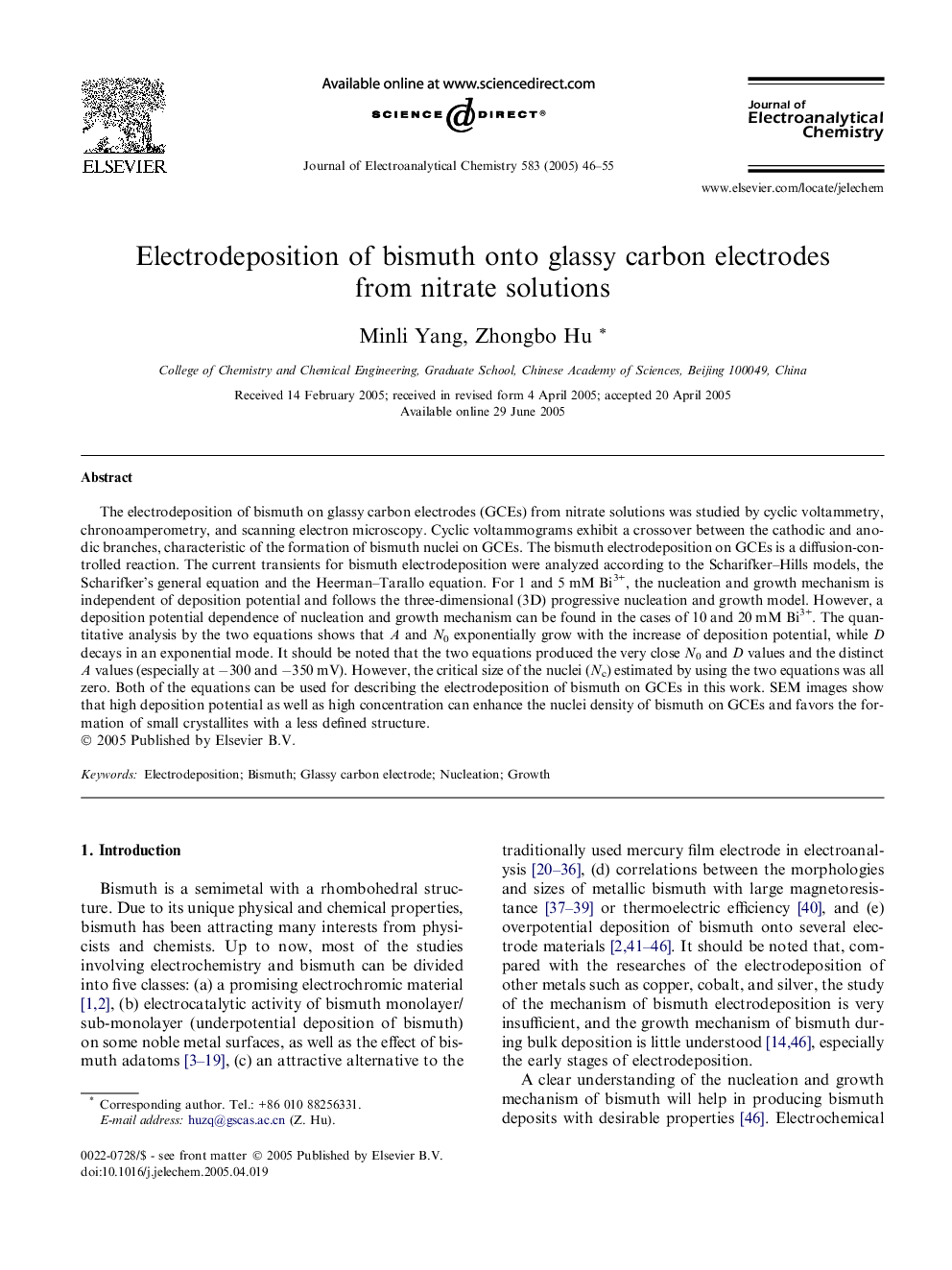| Article ID | Journal | Published Year | Pages | File Type |
|---|---|---|---|---|
| 10275812 | Journal of Electroanalytical Chemistry | 2005 | 10 Pages |
Abstract
The electrodeposition of bismuth on glassy carbon electrodes (GCEs) from nitrate solutions was studied by cyclic voltammetry, chronoamperometry, and scanning electron microscopy. Cyclic voltammograms exhibit a crossover between the cathodic and anodic branches, characteristic of the formation of bismuth nuclei on GCEs. The bismuth electrodeposition on GCEs is a diffusion-controlled reaction. The current transients for bismuth electrodeposition were analyzed according to the Scharifker-Hills models, the Scharifker's general equation and the Heerman-Tarallo equation. For 1 and 5Â mM Bi3+, the nucleation and growth mechanism is independent of deposition potential and follows the three-dimensional (3D) progressive nucleation and growth model. However, a deposition potential dependence of nucleation and growth mechanism can be found in the cases of 10 and 20Â mM Bi3+. The quantitative analysis by the two equations shows that A and N0 exponentially grow with the increase of deposition potential, while D decays in an exponential mode. It should be noted that the two equations produced the very close N0 and D values and the distinct A values (especially at â300 and â350Â mV). However, the critical size of the nuclei (Nc) estimated by using the two equations was all zero. Both of the equations can be used for describing the electrodeposition of bismuth on GCEs in this work. SEM images show that high deposition potential as well as high concentration can enhance the nuclei density of bismuth on GCEs and favors the formation of small crystallites with a less defined structure.
Related Topics
Physical Sciences and Engineering
Chemical Engineering
Chemical Engineering (General)
Authors
Minli Yang, Zhongbo Hu,
